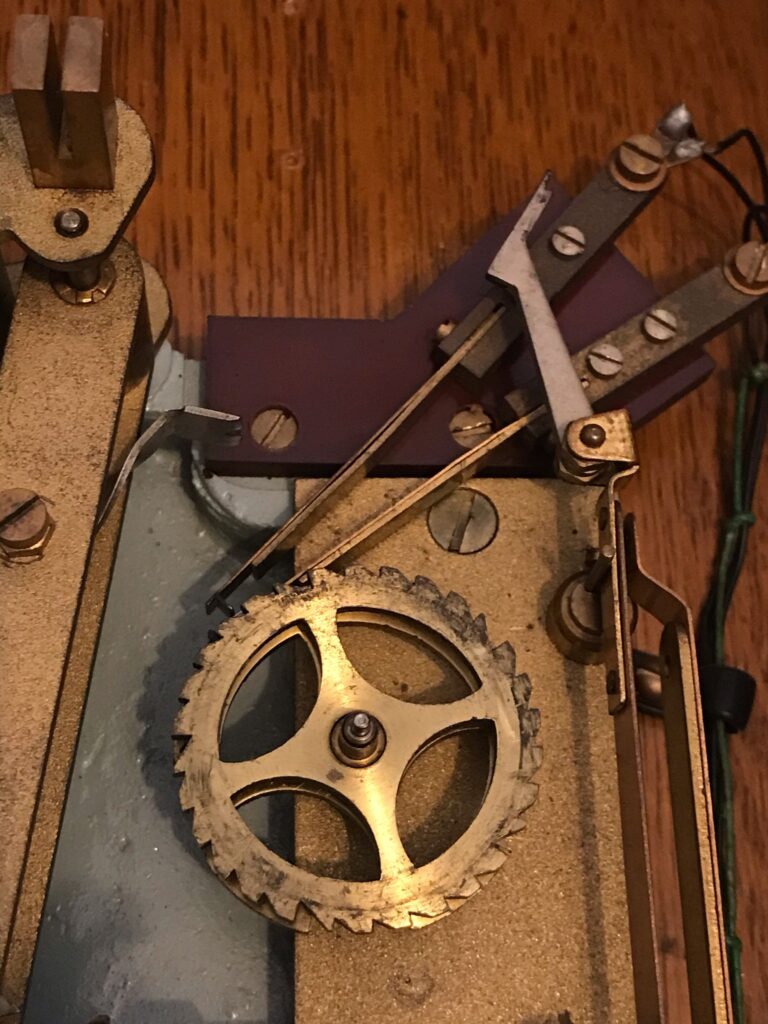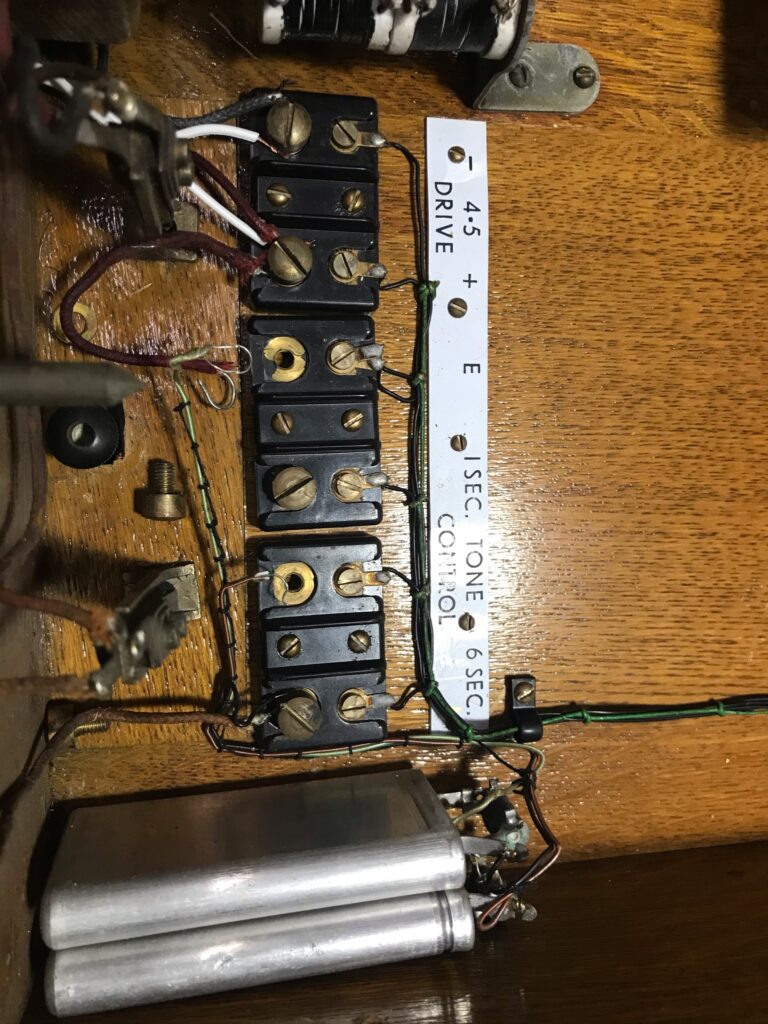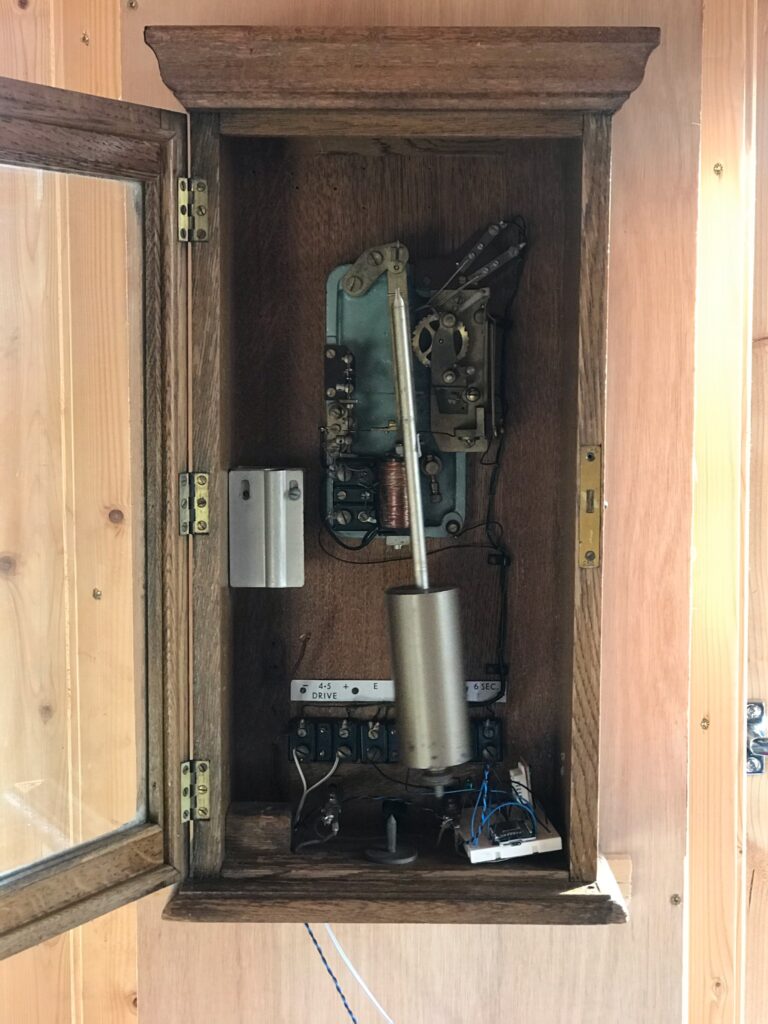As you might have noticed, I have hit middle age hard. First the shed, then the ponds, now fucking clocks. Not just any clocks mind you, I have obtained an electrically powered Gent’s GPO Type 46.
Why? because its pretty, but also I don’t need to wind it. I could of course have purchased an anniversary clock, but they are inaccurate as shit, and often look twee.
The Beginning
I wanted to have a nice longcase clock. Infact I wanted to make a longcase clock based on a gravity fed springdrive movement. However firstly it didn’t pass the wife test, and secondly I haven’t managed to make the springdrive bit work properly.
Then I discovered the Sychronome mechanism. The basic operation is a free swinging pendulum that when it falls below a certain arc, get a kick from a electro magnet. Up until quartz came in, these were the gold standard for time keeping.
The Middle
Having firmly established that I wasn’t allowed a longcase clock, especially if it made a loud noise every 30 seconds, I looked to see if I could modify a wall clock.
Then I stumbled on the type 46 transmitter. It appears to have been designed for billing phone call duration. However I’ve yet to look into it fully, because I’m worried that I’ll end up wanting a full analogue telephone exchange.
A swift eBay later, and I was the proud owner of a pendulum in a box.
Why did you by a clock with no clock face you knob?
The Lady Wife
Installation
I have hung it on my shed wall, right next to the door. This is certainly not the most ideal of places. whilst the shed is insulated, it doesn’t have that much thermal mass. So the temperature can be anywhere between 5 and 35 degrees C depending on the season.
Cleaning
This clock had been abused in its previous life. There is evidence of water damage(many years ago, perhaps when it was still in commission). Its been revarnished but not very well. The previous owner had warned me that he’d not had time to de-gunge it.
The best part about these clocks is that they are designed to be maintained easily. its trivial to take them apart safely. Unlike other electric clocks cough timex electroquartz cough, the parts go back together without the use of special equipment

As you can see there is a fair amount of black gunk on the indexing wheel. I didn’t want to polish it, so I gently removed what I could with alcohol and other non aggressive degreasers
The hip toggle was utterly coated with grease. Once completely cleaned it needed re-adjusting, as it had obviously been tuned to account for grease and gunk.

At some point in its life, it had been converted to run on 24v rather than the 4.5v it was designed for. It also had two official GPO capacitors, which I suppose are there to give an extra kick to the slave clocks.
There is evidence of a complete re-wiring, which was only partially successful. The earth of the 1s/tone/6s switches is also connected to the positive of the drive circuit, which makes things a touch interesting.

Step two: the disciplining
In order to tune this clock, I need to see how far out it really is. As I am a sysadmin, I decided to hack up a script that outputs the time of the pendulum swing, the number of swings a second and the humidity and temperature changes. All of this data is then fed into graphite so it can be displayed in graphs.

As we can see, its not the most accurate of clocks. Partly its down to being mounted to a log cabin wall. The manual is very specific about making sure the wall is “of the most solid stock”.
I also have to own up to the fact that I’m not entirely convinced that the way I’ve programmed the ESP2866 is correct. The realtime clock is properly wonky, (more so than indicated here) so I have added NTP correction.
However that doesn’t account for interrupts and other bits of code that interject the measuring. I have a slave movement which I will hook up eventually that will indicate how many seconds are lost a day (+- 30 seconds)
Glory shot

